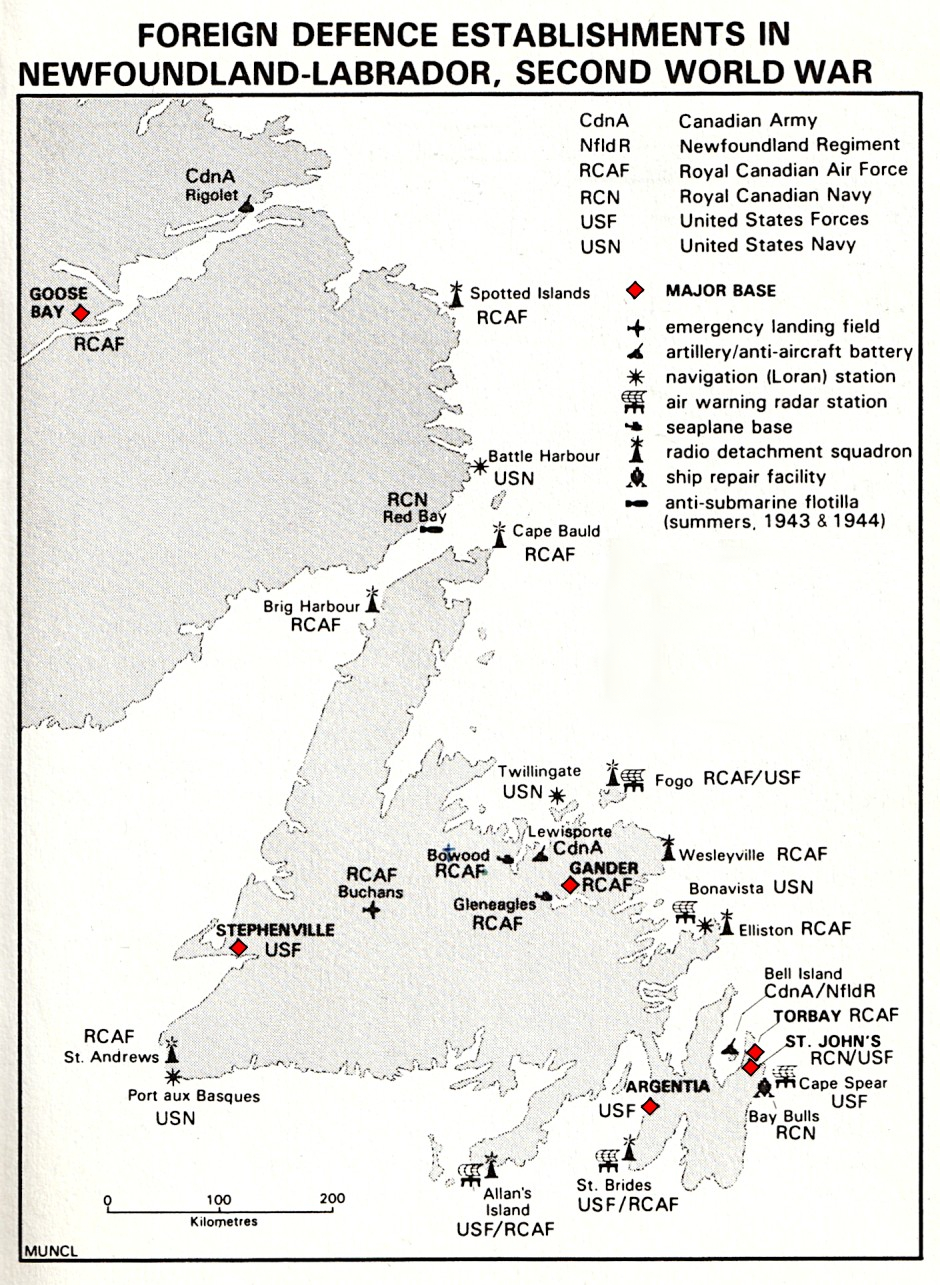Military bases in Newfoundland and Labrador in World War II

Map:
adapted from Malcolm MacLeod, 1986, Peace of the Continent, Harry Cuff Publications, St. John’s, NL.
This map shows the location of foreign military bases built in Newfoundland during World War II. During the war, Newfoundland was a British colony and had not yet joined Canada (that happened later in 1949). Early in the war, both the governments of both Canada and the United States realized the strategic importance of Newfoundland to the defence of North America and to fighting the war in the Atlantic Ocean and Europe. As a result, Canada and the United States negotiated agreements with Britain and Newfoundland to build military bases in Newfoundland and Labrador. These bases became essential to the Allied war effort.
Canada built air bases at Torbay (near St. John’s), Gander and Goose Bay. These airports served two purposes: a) as bases for anti-submarine patrols, and b) as the departure points for ferrying warplanes built in Canada and the United States across the Atlantic Ocean to Britain. Canada also built two seaplane bases at Botwood and Gander Lake to support trans-Atlantic seaplane flights. Canada built naval dockyards and shipyards in St. John’s and Bay Bulls, to service the warships escorting convoys of merchant ships across the Atlantic. Lastly, Canada built artillery batteries to defend several strategic coastal locations around Newfoundland and Labrador, such as the iron ore mines on Bell Island.
The United States built an Army base, dockyard and artillery batteries in St. John’s, a naval air station and dockyard at Argentia and an air base in Stephenville. Great Britain stationed Royal Navy staff in St. John’s and Royal Air Force personnel at Gander and Goose Bay.
Canada and the United States also built a network of smaller military installations around the coast of Newfoundland and southern Labrador for naval radio communications, LORAN navigation and air defence radar.
The construction of all these military installations and the subsequent arrival of thousands of Canadian and American servicemen and women was sometimes referred to as the “friendly invasion” by Newfoundlanders and Labradoreans.

